Diplopoda: Millipedes
Millipedes have a long body composed of many segments. Each segment bears two pairs of legs. Most millipedes are herbivorous.

Giant Millipede
Chilopoda: Centipedes
Centipedes have a long body composed of many segments. Each segment bears one pair of legs. They are carnivorous and have poison claws for capturing prey.
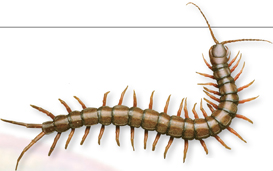
Centipede
Insecta (continued)
Many “bugs” benefit humans. For example, ladybugs (which are not all “ladies”) eat pests, and bees pollinate plants. Insects such as praying mantises, katydids, flies, moths, beetles, and ants also have important roles in ecosystems.
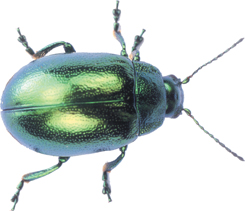
Mint Beetle
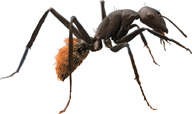
Desert Ant

Ladybug
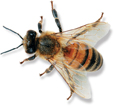
Honeybee
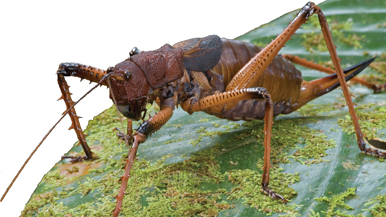
Lobster Katydid
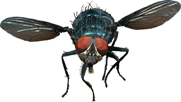
Blowfly
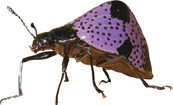
Fungus Beetle
Table of Contents
Miller & Levine Biology
About the Authors
Changing the World of Biology Education
Contents
Diversity of Life: A Visual Guide DOL•1–DOL•64
Labs and Activities
Features
UNIT 1 The Nature of Life
UNIT 2 Ecology
UNIT 3 Cells
7 Cell Structure and Function
8 Photosynthesis
9 Cellular Respiration and Fermentation
10 Cell Growth and Division
Unit Project
UNIT 4 Genetics
11 Introduction to Genetics
12 DNA
13 RNA and Protein Synthesis
14 Human Heredity
15 Genetic Engineering
Unit Project
UNIT 5 Evolution
16 Darwin's Theory of Evolution
17 Evolution of Populations
18 Classification
19 History of Life
Unit Project
UNIT 6 From Microorganisms to Plants
20 Viruses and Prokaryotes
21 Protists and Fungi
22 Introduction to Plants
23 Plant Structure and Function
24 Plant Reproduction and Response
Unit Project
UNIT 7 Animals
25 Introduction to Animals
26 Animal Evolution and Diversity
27 Animal Systems I
28 Animal Systems II
29 Animal Behavior
Unit Project
UNIT 8 The Human Body
30 Digestive and Excretory Systems
31 Nervous System
32 Skeletal, Muscular, and Integumentary Systems
33 Circulatory and Respiratory Systems
34 Endocrine and Reproductive Systems
35 Immune System and Disease
Unit Project
A Visual Guide to The Diversity of Life
Appendices
Appendix A Science Skills
Appendix B Lab Skills
Appendix C Technology & Design
Appendix D Math Skills
Appendix E Periodic Table
Glossary
Index
Credits
- Formulas and Equations
- Applying Formulas and Equations
- Mean, Median, and Mode
- Estimation
- Using Measurements in Calculations
- Effects of Measurement Errors
- Accuracy
- Precision
- Comparing Accuracy and Precision
- Significant Figures
- Calculating With Significant Figures
- Scientific Notation
- Calculating With Scientific Notation
- Dimensional Analysis
- Applying Dimensional Analysis




